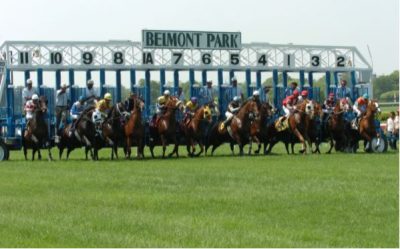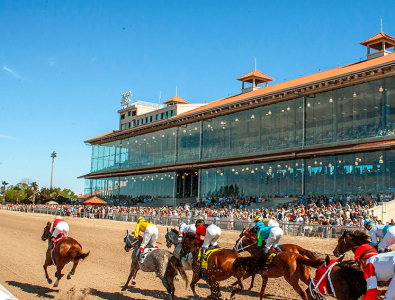 by John Rothschild
by John Rothschild
I had my checklist of dreams as a youngster that changed, as I grew older:
- At 6 years old I wanted to be a baseball player (who didn’t).
- At 18 years old I got into medical school (really).
- At 23 years old I studied for an MBA.
- At 25 years old I opened up a successful chain of retail food stores.
- At 28 years old, I got trained by the Amish to become a horseman. How did that get in there?
Growing up, my only experience with the equine community was brief and forgettable. When I turned seven my parents convinced themselves — while trying to assure me — that I would love riding lessons.
I was reluctantly presented to my instructor Mic, who then introduced me to my politically affiliated horse named Bay of Pigs.
Not knowing what to expect, I envisioned that we would race or gallop through the woods like you see in the movies.
I was wrong.
He had me stand up and sit down in the saddle for hours at a time, while going less than 3 miles per hour, inside a circular track that was no more than 30 feet in diameter. Sightseeing involved staring at a barn that looked like it should be thermoluminescence-dated and cantering next to various organic items. For real fun, he tried to teach me how to jump some four-inch pieces of wood.
Maybe to keep my interest, my parents entered me in a horse show. All I remember was running over the judge, but still getting some sort of ribbon. I just wanted to play football and baseball and notified my parents that, at 8 years old, I was officially retiring from the equine business.
Twenty years later, an unlikely series of events re-introduced me to the world of horses. I had never been to a racetrack and never thought I would have my own stable. But an Amish friend from Lancaster, Pennsylvania had bought retired racehorses to pull his buggies and decided to use some as broodmares. A few had racing pedigrees and dropped foals that looked like they may be capable at the track.
His innocuous lifestyle changed when some of these babies became successful, and his name started appearing in the racing program. The Amish church didn’t like the community exposure and threatened expulsion if his involvement with racing continued.
He asked if I would put some of the stock in my name. In exchange, I would get to purchase horses well below market value. I only needed to give him $5,000 and I was in the racing business!
Owning a racehorse is not for the faint of heart. It’s sexy until the bills start to pile up. Normal vet and training costs can be over $6,000 a month and most horses bred for racing do not make it to the track.
Multiply this by 15 horses for 12 months a year and you can get into substantial debt. The purchase price of a horse is merely the down payment. The old horseman’s line still applies: “The best way to make a small fortune in the horse business is to start with a large one.”
You can get lucky, as I did, but for most, the biggest financial benefit is as a tax loss.
My first racehorse was a filly named Miss Forty. At one time, her sire had set a track record for the mile and I was hopeful his genetics would be passed on to his daughter.
After a year and a half of schooling and conditioning, she was working out in respectable times and was getting ready for her first race. I had a good trainer and a naïve, optimistic outlook. Everything was in place for my first trip to the winner’s circle… and then bad things started happening.
First, the filly kicked a fence and needed stitches. Then, she bowed a tendon and needed rest before training again. For added financial inconvenience, she had a flipped palate repaired, and one of her eyeteeth removed.
Finally, after nine more months and $7,200 in vet bills, my trainer “dropped her in the box” (entered her in a race). But we had another problem that was incurable.
She wasn’t fast.
She did finish third once — unfortunately, there were only 3 horses in the race.
My second horse was named Walton. This gelding was one of the smallest horses you’ll ever see on a track, so we decided to start him at the lowest level — at a state fair.
I couldn’t attend his inaugural start and didn’t think it would matter. Later that day, I called the racing secretary to see how we had done. The racing secretary wasn’t very articulate, but, with little inflection, let me know that I had won the race.
My take after paying the rider and trainer their cut was $440. I could win every race at this level and still lose money.
Two weeks later, we raced at another state fair. I was working and, once again, couldn’t watch.
I called up the racing secretary for the result — and he made the last guy sound like Dale Carnegie.
“Hi, this is John Rothschild, can you tell me how Walton did?”
“Yup.”
“Well, where did he finish?”
“In front.”
“Did he win?”
“Yup.”
“How much did he win by?”
“Lots.”
I was getting excited, but wanted a little more information — and a response longer than two words. I didn’t know anything about track times, but asked: “Did he go fast?”
“Yup, set a new track record.”
Walton’s next race, still at the state fair level, was the following week. I now considered myself an accomplished winning horse owner and wanted to see my talented stock perform. I picked up my future wife, who, at the time had no interest, in sports or horse racing (although that was changing).
We still had no understanding of class and no idea that we were competing one notch above the hobbyhorse level. We climbed into the grandstands completely over-dressed, and sat between an older Amish man, who looked like his picture should be on a potato chip can, and a poorly dressed individual who needed to shower and brush his tooth.
Prior to the race, the Amish man struck up a conversation with my wife, asking where we were racing next — meaning, which state fair.
She ambitiously told him “Belmont,” which is one of the most prestigious tracks in the country.
He was pretty sharp, started laughing, and asked if the carousel horse behind us would be in the next Kentucky Derby.
Well, you never know… miracles can happen. That horse actually rose from the lowest level and wound up running on The New York circuit, winning his first nine starts!
Things were really starting to look up. In future articles, I’ll talk further about my experiences as a horse owner.
What Did We Learn From the Louisiana Derby?

Fair Grounds Race Course – Photo Courtesy of www.fairgroundsracecourse.com
The surprise winner of last weekend’s Louisiana Derby was By My Standards. He previously had one win in four lifetime starts — a maiden special weight affair. His final time was the fastest since the race was lengthened to nine furlongs in 2010
So, was Be My Standards the best horse in the race?
Probably not. He hugged the rail the entire time. I think the second-place finisher, Spinoff, who raced 3- and 4-wide throughout was better.
That was only Spinoff’s second start since August, and he had the least distance experience in the field. I always try to be available for questions [email protected]

An unusual series of events led John Rothschild to be one of the most respected horse racing and football handicappers in the country. He went from getting accepted into medical school at age 18, to study for an MBA, to owning a successful racehorse syndication business.
He’s combined simple mathematical probability with principles from human nature to make winning choices on a consistent basis. John has written or contributed to ESPN, Bloomberg News, New York Sports Scene and Politico, among others.


